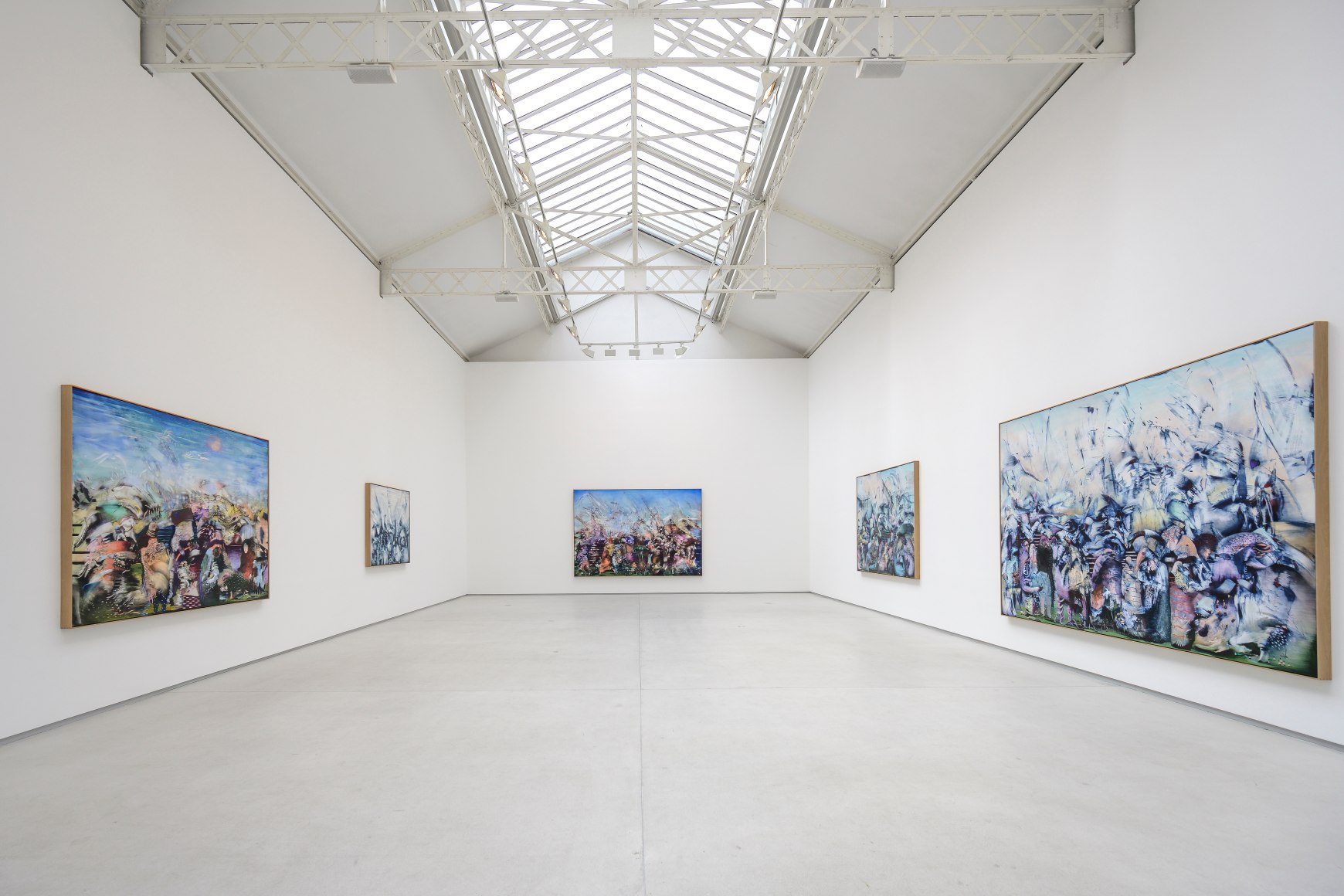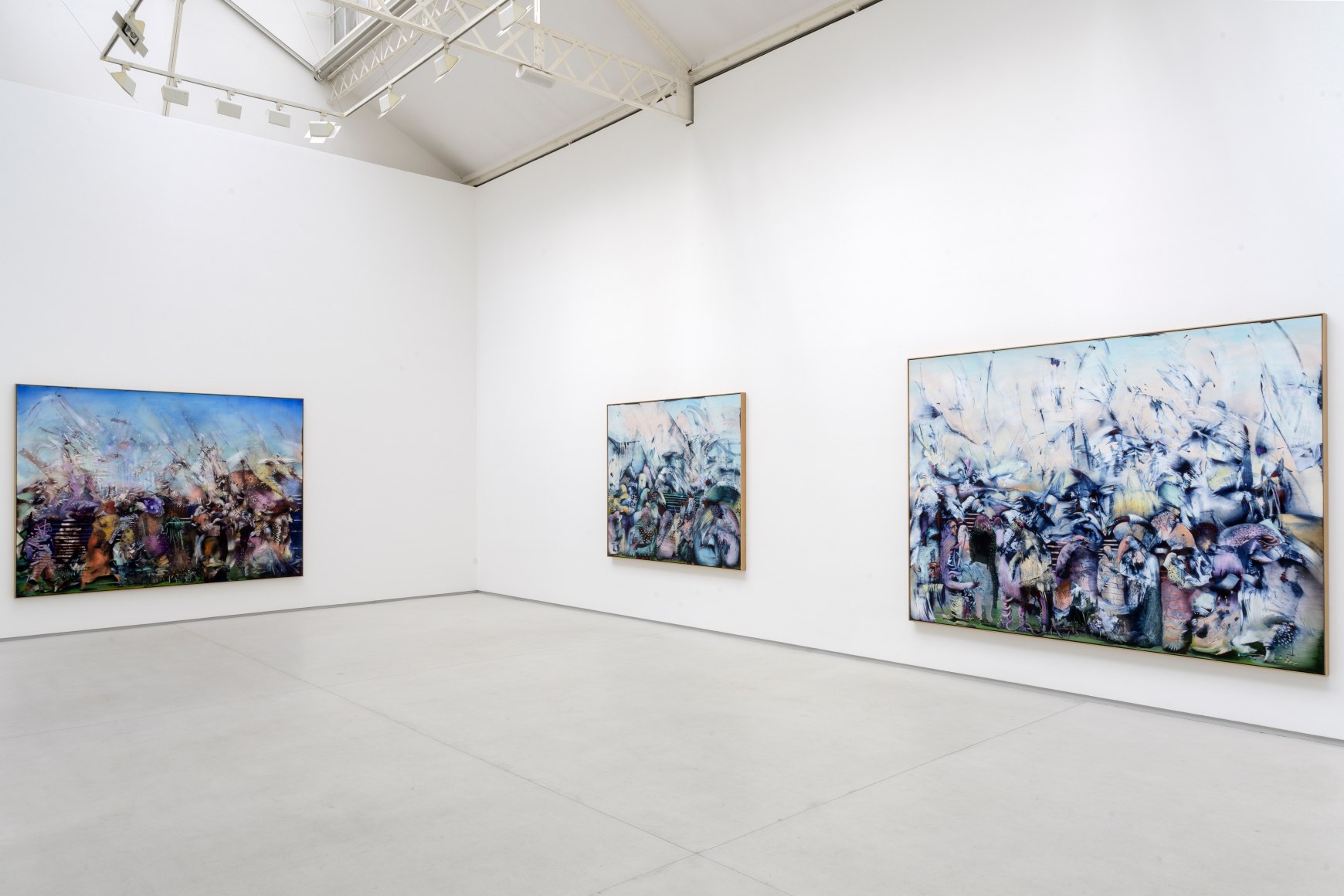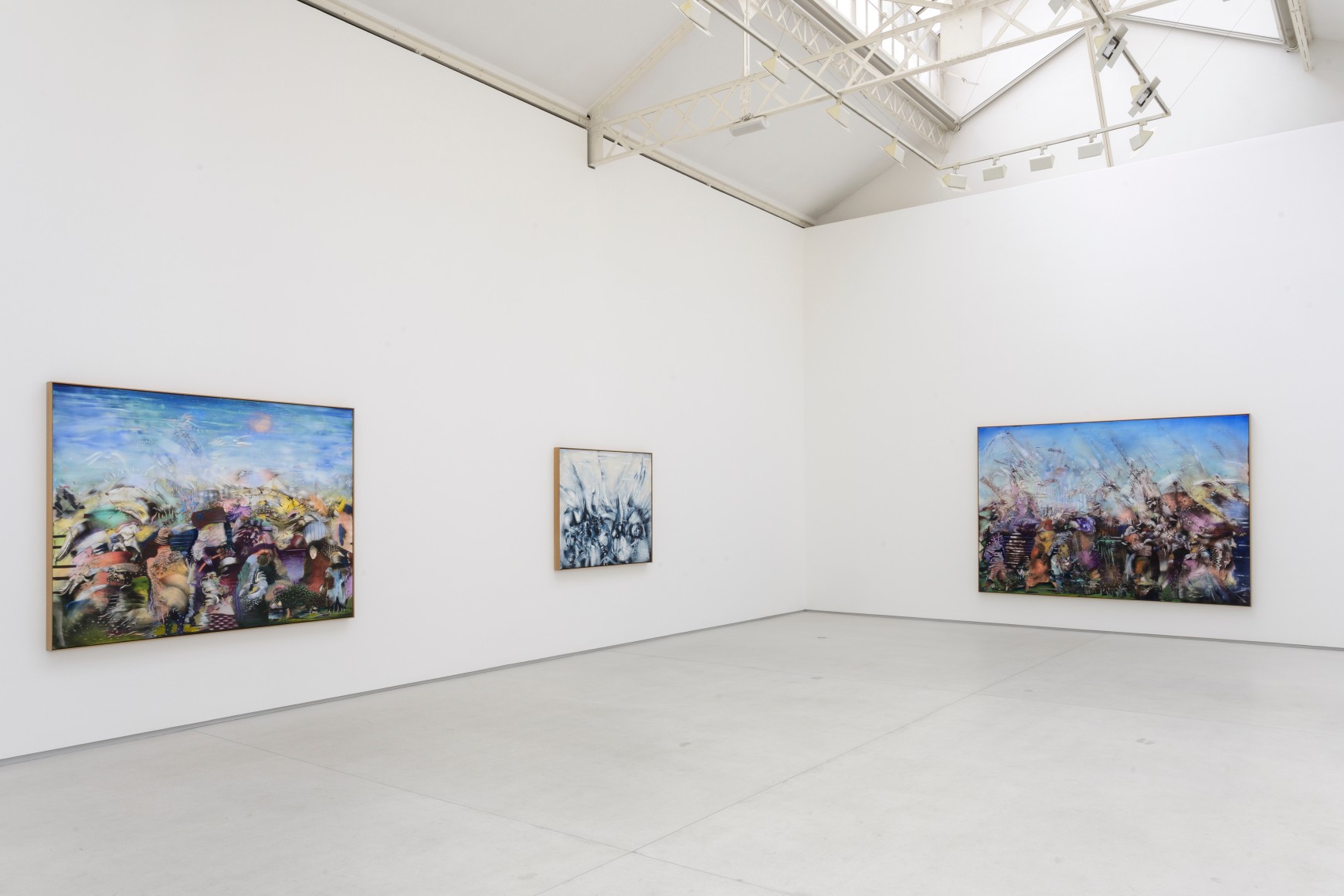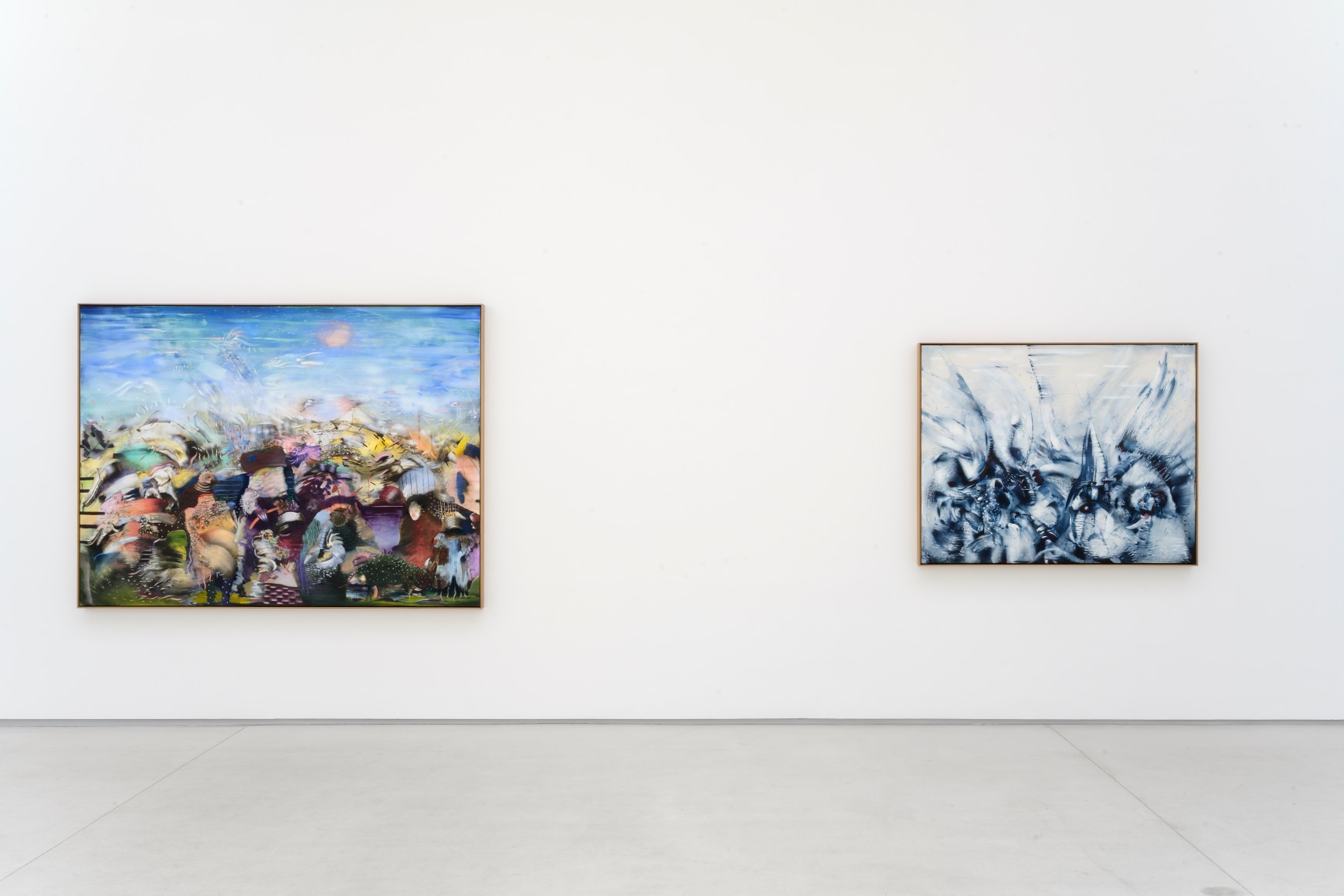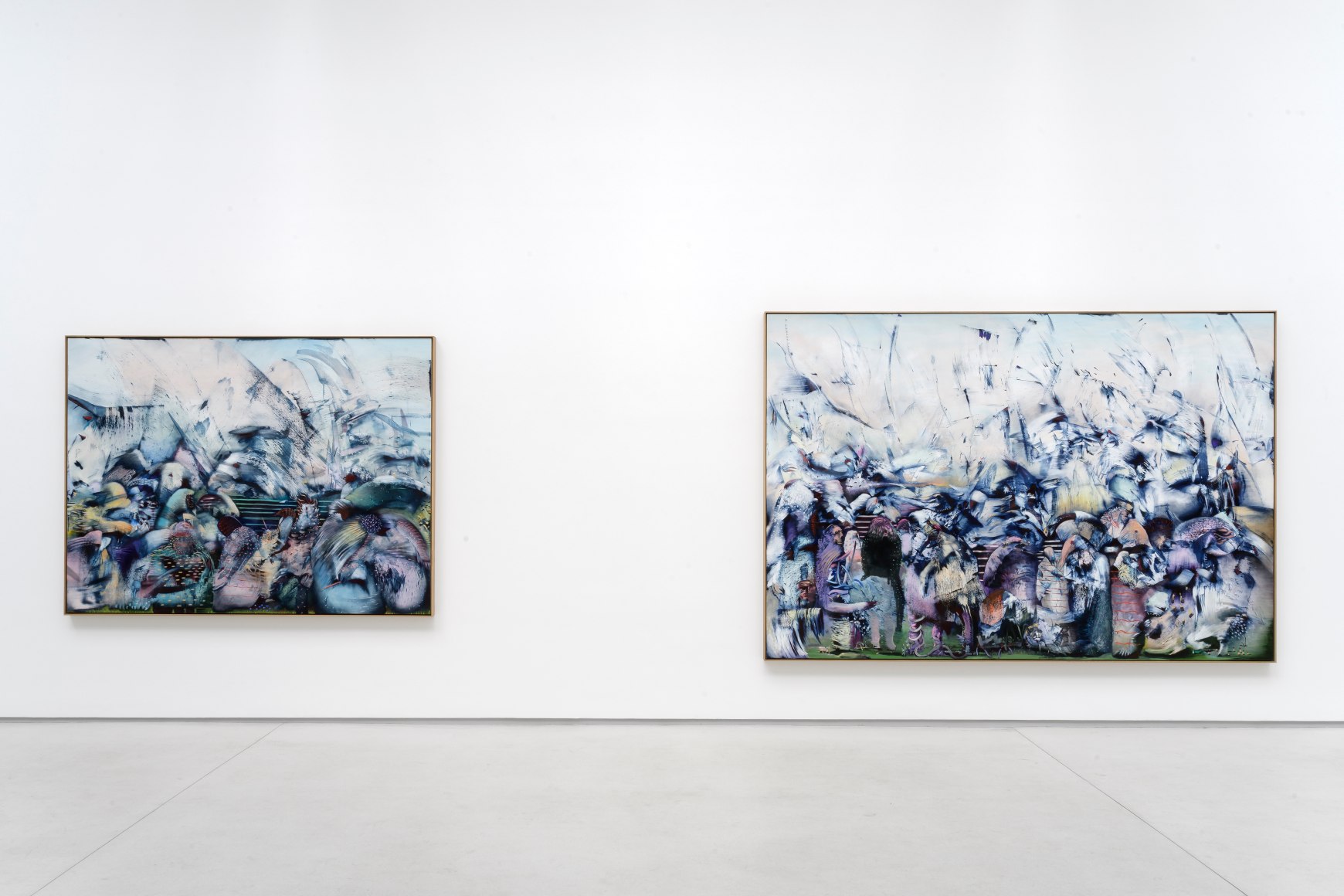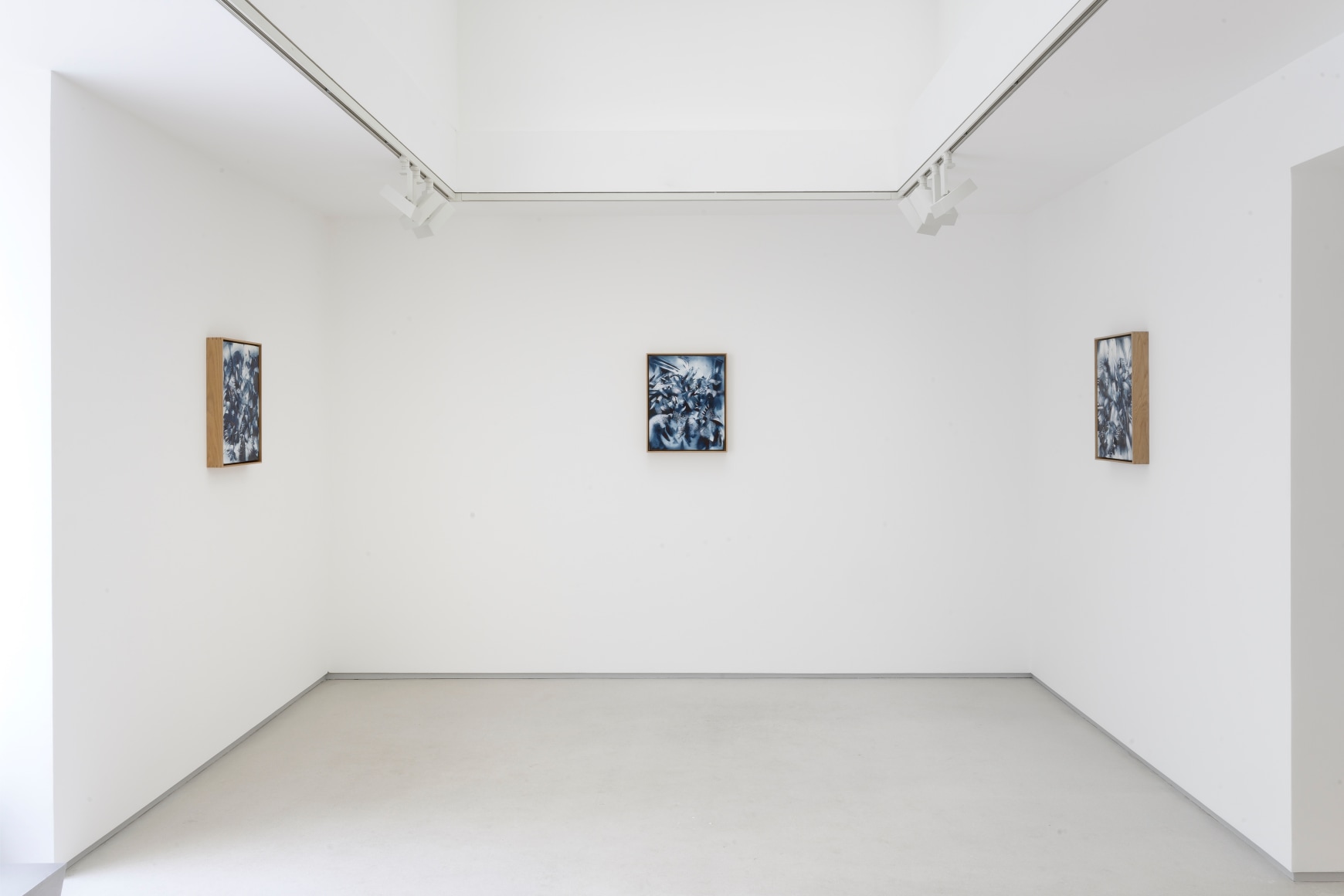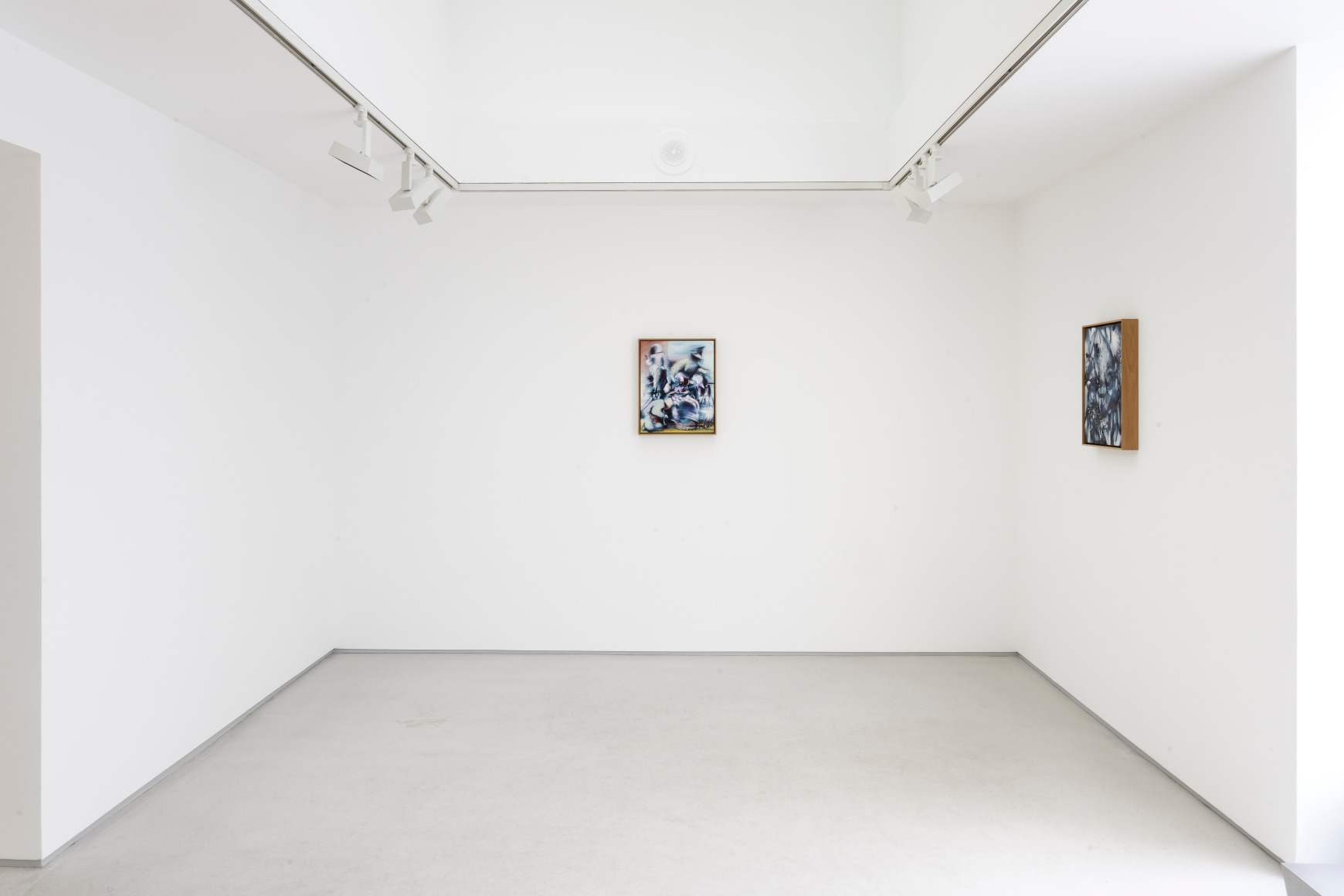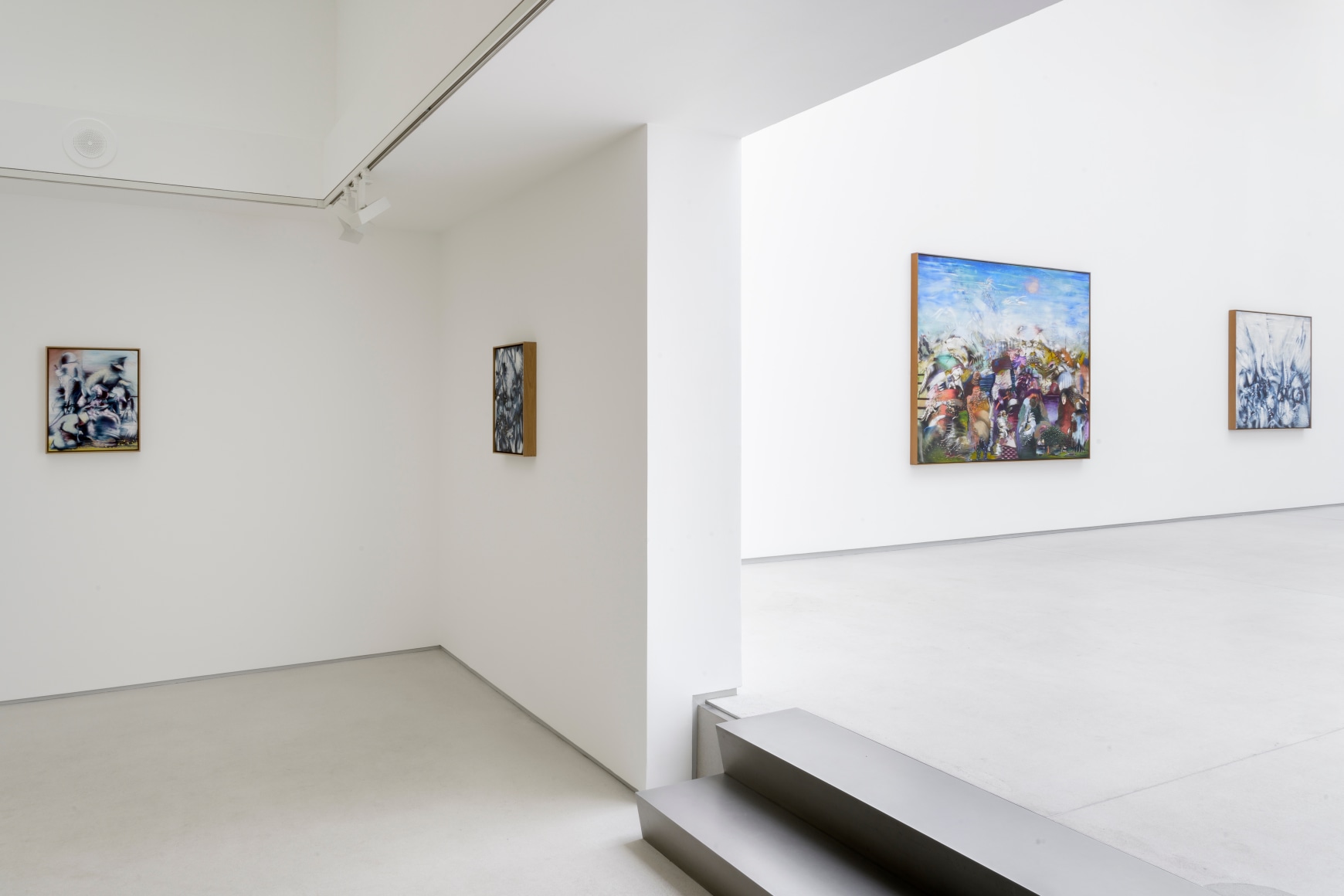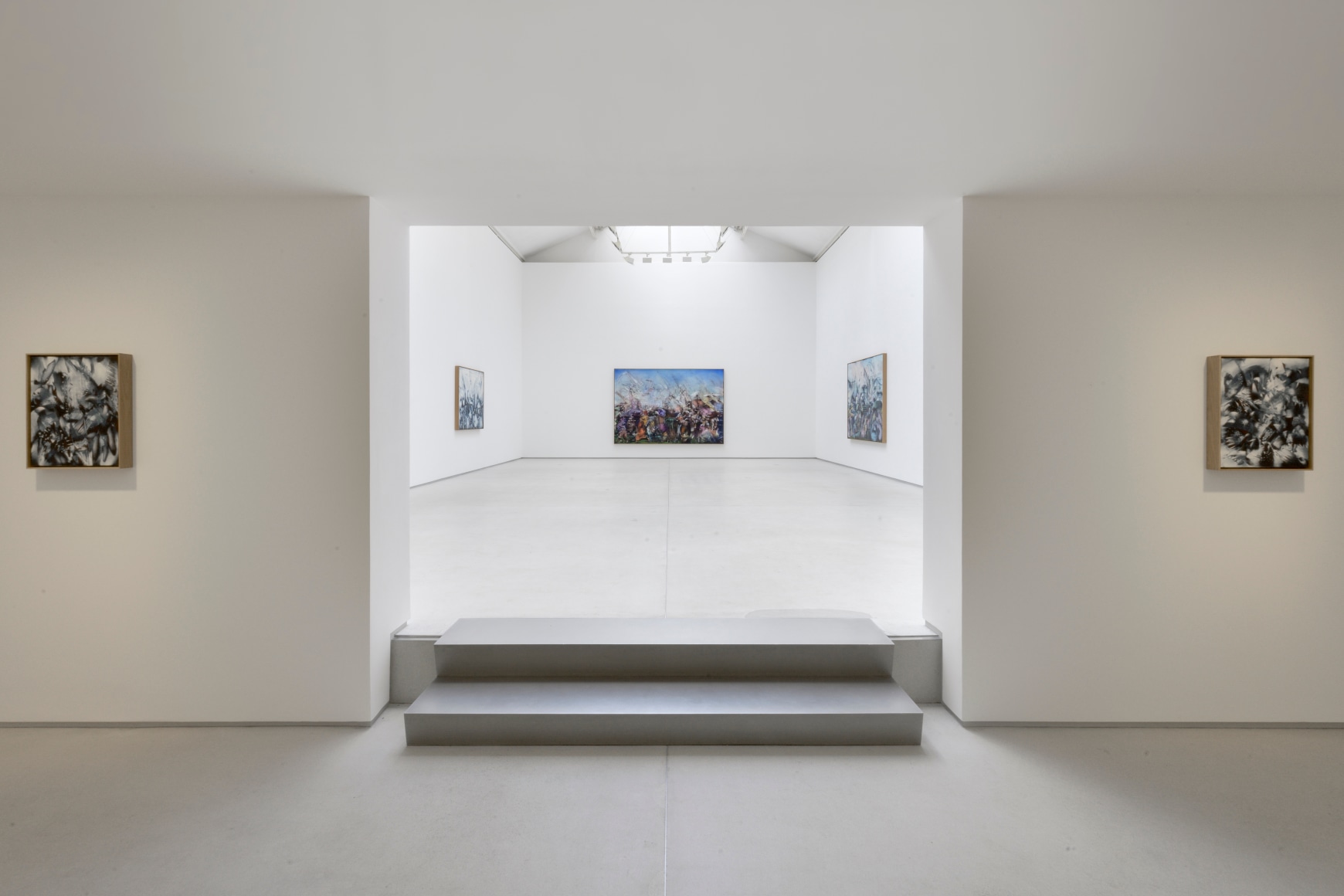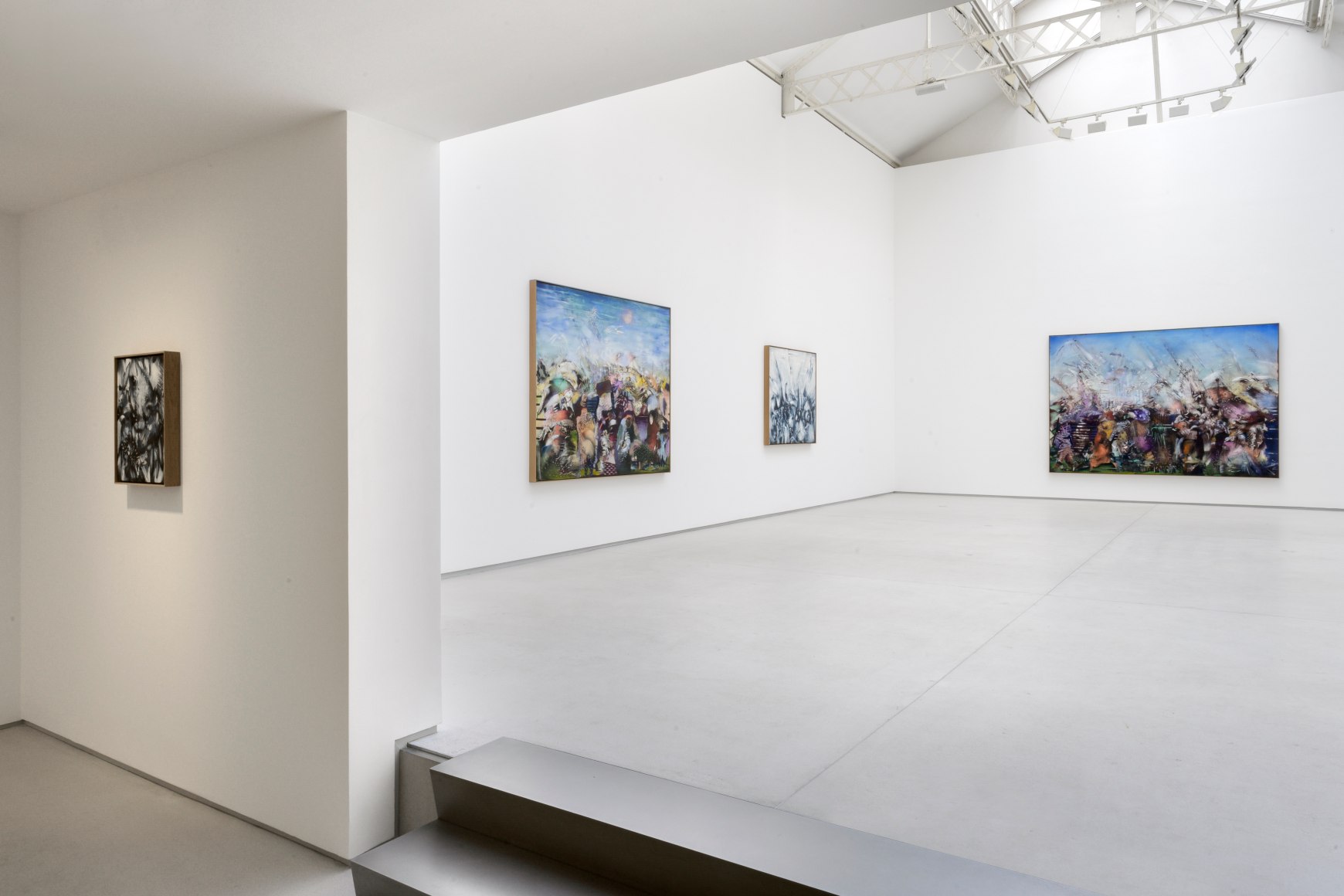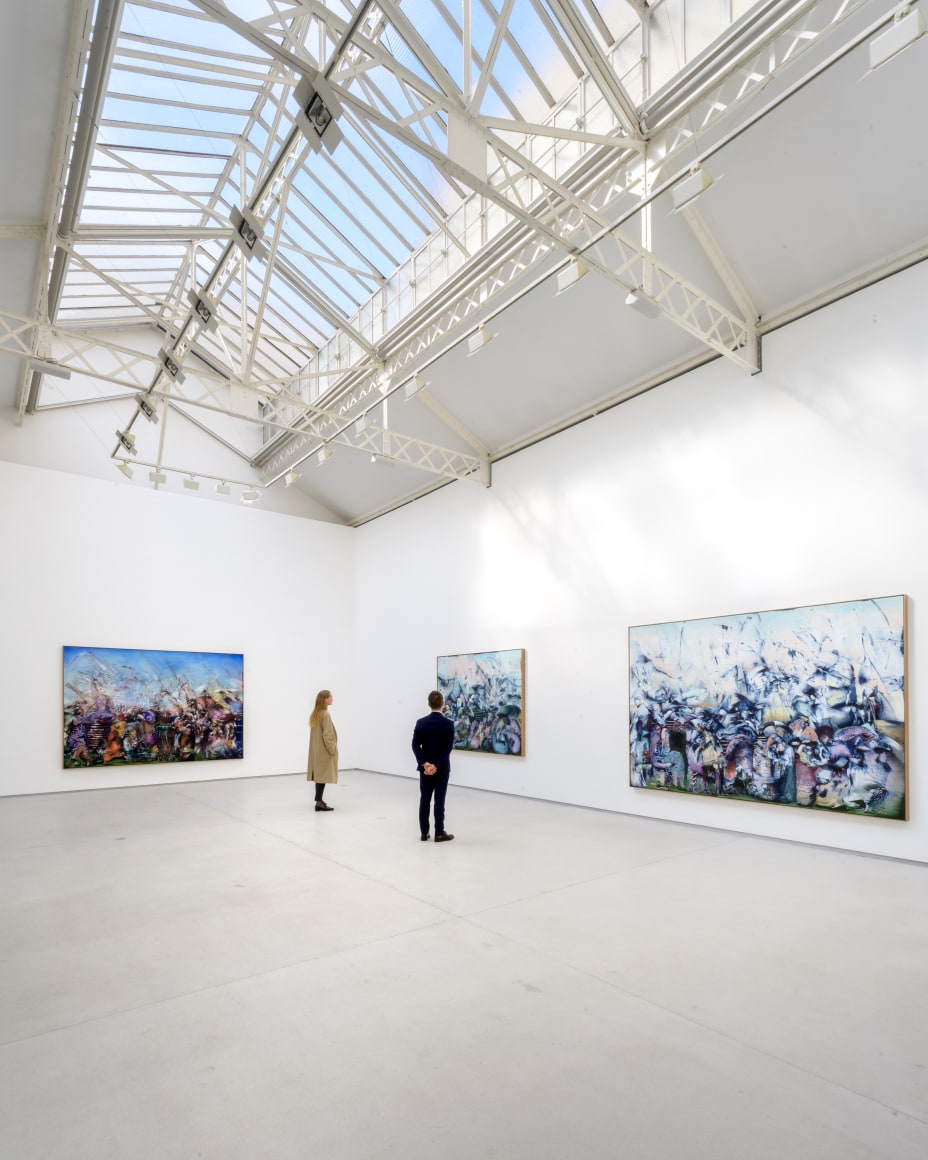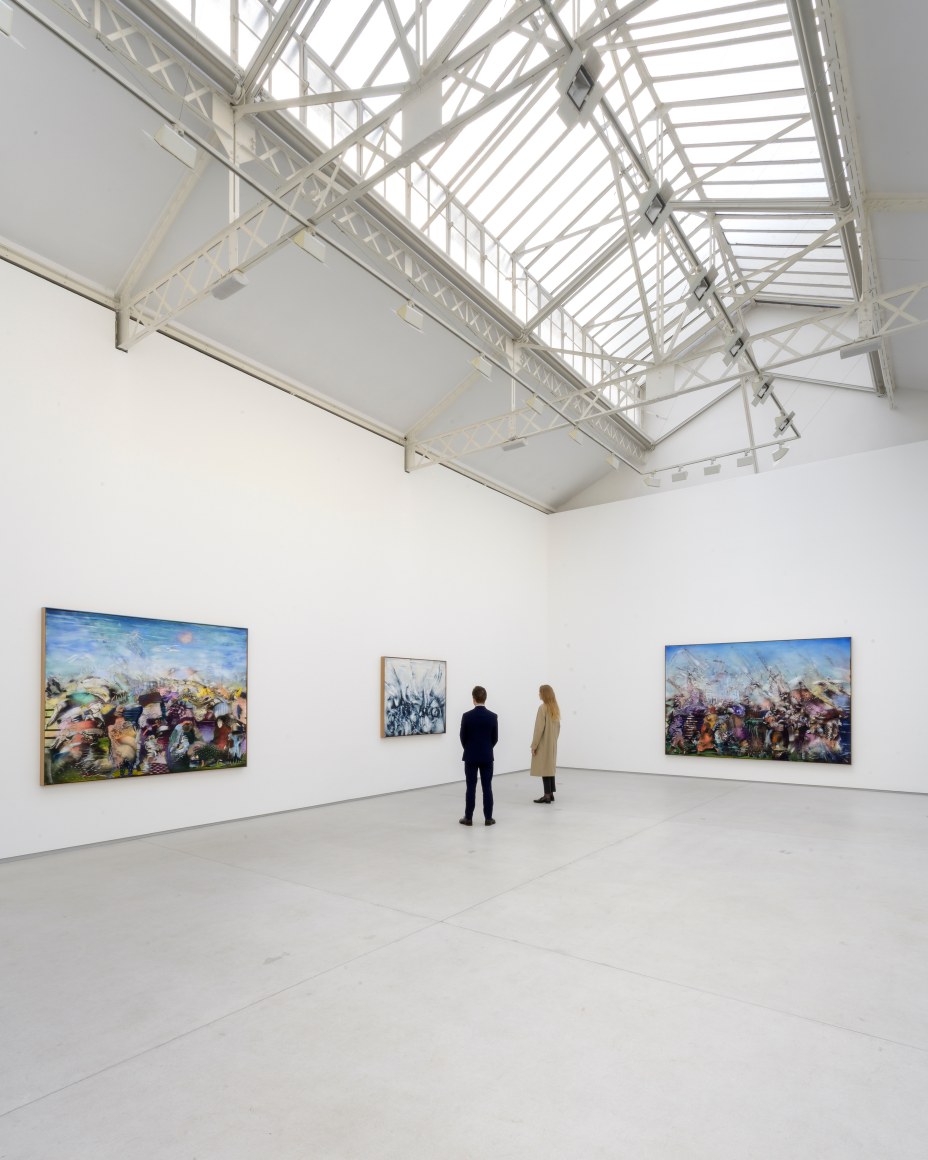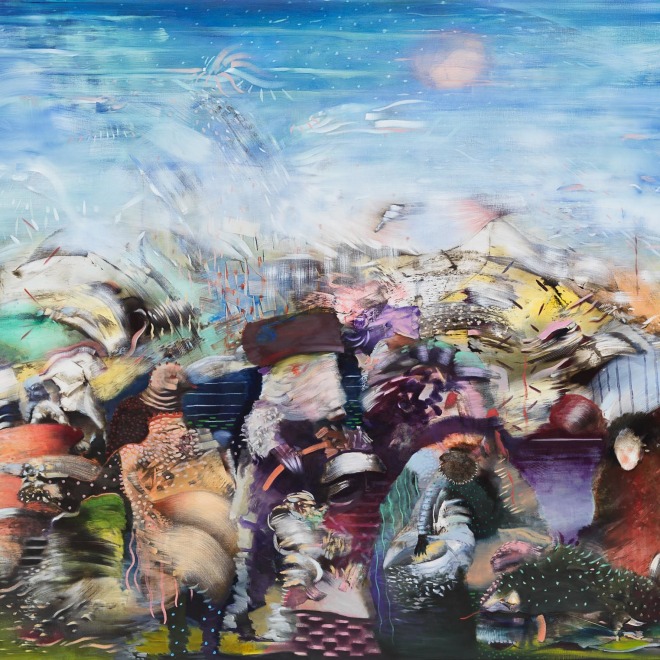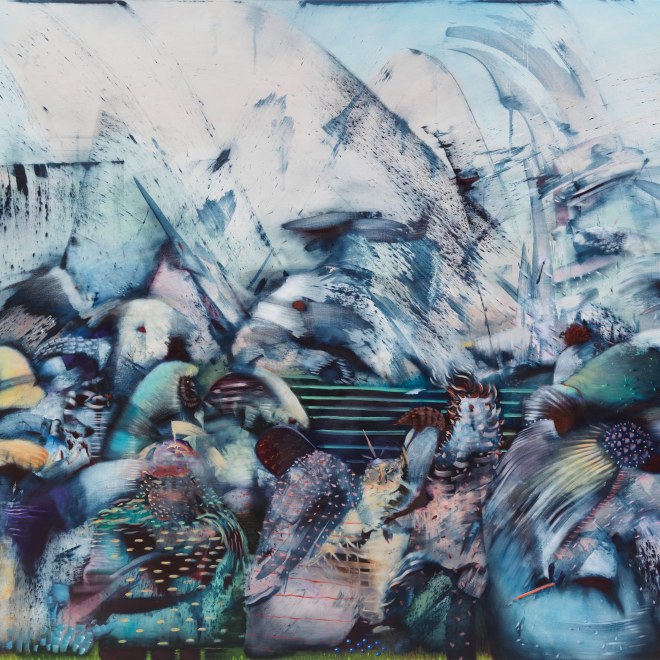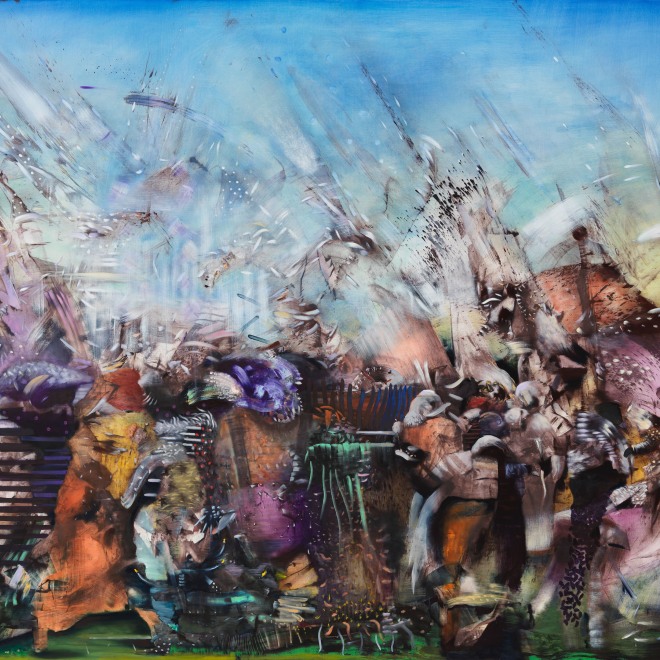
When I begin a painting, it is always based on an internal sound. As soon as I apply the brush, the sound begins, and I am able to compose the work based on the sounds I hear as I’m painting. It is the force that drives the whole painting and helps me compose the work and pull everything together. - Ali Banisadr
Galerie Thaddaeus Ropac Paris presents Ordered Disorders, an exhibition of new works by American-Iranian painter Ali Banisadr (b. 1976), the artist’s sixth show with the gallery. Alluding to the representation of conflicts in the history of art, this new series reflects upon the current state of increasing unrest in the world. Neither fully abstract nor definitively figurative, Banisadr’s richly evocativepaintings do not seem to have any single narrative. Within the same picture plane multiple dimensions are conflated, translating an internal experience of sound into visual terms.
Ali Banisadr is gifted with synaesthesia, whereby otherwise separate senses are linked – in this case colour and sound. This ability translates into abstract landscapes rendered in vibrant colours, a trait that links him to the art of Wassily Kandinsky (1866-1944), who also experienced synaesthesia. The restless surfaces of Banisadr’s paintings juxtapose competing sensibilities, setting areas of orderly, precise brushwork against energetic, gestural ones. As indicated in the title of the exhibition, the artist sees his paintings as an attempt to understand the innate chaos of the world. They do not reflect any specific conflict but rather express universal turmoil.
Having always been fascinated by how systems function – whether political, cultural or historical – Banisadr paints complex structures in which different elements intermingle, adopting a wider view of the system to analyse it at a macro level. In most paintings, theorganisation of space is disrupted and the focus is lost. Banisadr avoids any central focal point or protagonist to emerge from the pictorial field. Instead, multiple figures flow into each other and overlap. This conflation creates much of the energy that emanates from the paintings. Jumping from one narrative to another creates an unsettling effect, as if different voices were speaking at the same time, and the viewer is left to make their own sense of the symphony of colour and form.
While Banisadr’s practice is anchored in the lineage of art historical figures such as Hieronymus Bosch (1450–1516), his art also resonates strongly with the world we live in today. The enigmatic figures that populate his compositions are often hybrids. Stemming from the artist’s imagination and his fascination with mythological creatures, they embody the constantly shifting identities of our increasingly digital world. Figures are depicted in the process of metamorphosis, where only the lower part is recognisable and the upper body has become squid-like in shape.
If there is no clear before and after in Banisadr’s paintings, the interface between above and below remains important, the upper part of the canvas being generally quieter than the lower part. The more time spent in front of a Banisadr painting, the more the work unveils itself to the viewer. What at first glance appear to be abstract lines and lyrical forms begin to morph into characters involved in enigmatic narratives. Hidden creatures appear in the depths of the composition, wide brushstrokes attain new significance and pure abstraction becomes deliberate form.
About the artist
Ali Banisadr was born in Tehran, Iran, in 1976 and moved to California with his family when he was a child. He lives and works in New York.
Banisadr once remarked that his childhood memories, notably of the Islamic revolution and the Iran-Iraq war, were a mix of images, half abstract and the other half with recognizable forms. Present in all of his works is a sense of sound and movement that is due to the way in which Banisadr condenses his imagery, and chooses a wide range of colours to bring his subject to life.
In motion and evolving throughout the process of creation, Ali Banisadr’s work is characterized by an instability that fascinates the viewer and showcases the very essence of imagination. The scenes that Ali Banisadr paints fit within the art history narrative, from Hieronymus Bosch to Francis Bacon, bearing this ability to transport us into realms where beauty borders on horror, order on disorder, and where the depths of the sea merge with the farthest reaches of outer space.
Disguised beneath the magnificence of the paintings’ overall design – despair, isolation and terror are conveyed. Ali explains, “I became fascinated with all histories of war, conspiracies, colonialism and corruption.
Ali Banisadr’s works are part of important private and public collections: Centre Pompidou, Paris; Olbricht Collection, Berlin; François Pinault Collection, Palazzo Grassi, Venice; Museum der Moderne, Salzburg, Austria; British Museum, London; Metropolitan Museum of Art, New York; MOCA, Museum of Contemporary Art, Los Angeles; LACMA, Los Angeles County Museum of Art, Los Angeles.
In 2019 Ali Banisadr had a solo exhibition Foreign Lands at the Het Noordbrabants Museum in the Netherlands. The exhibition Bosch & Banisadr: We Work in Shadows exploring the correspondences of his paintings with Hieronymus Bosch is on view until 1st December2019 at the Gemäldegalerie der Akademie der bildenden Künste Wien, Austria.

